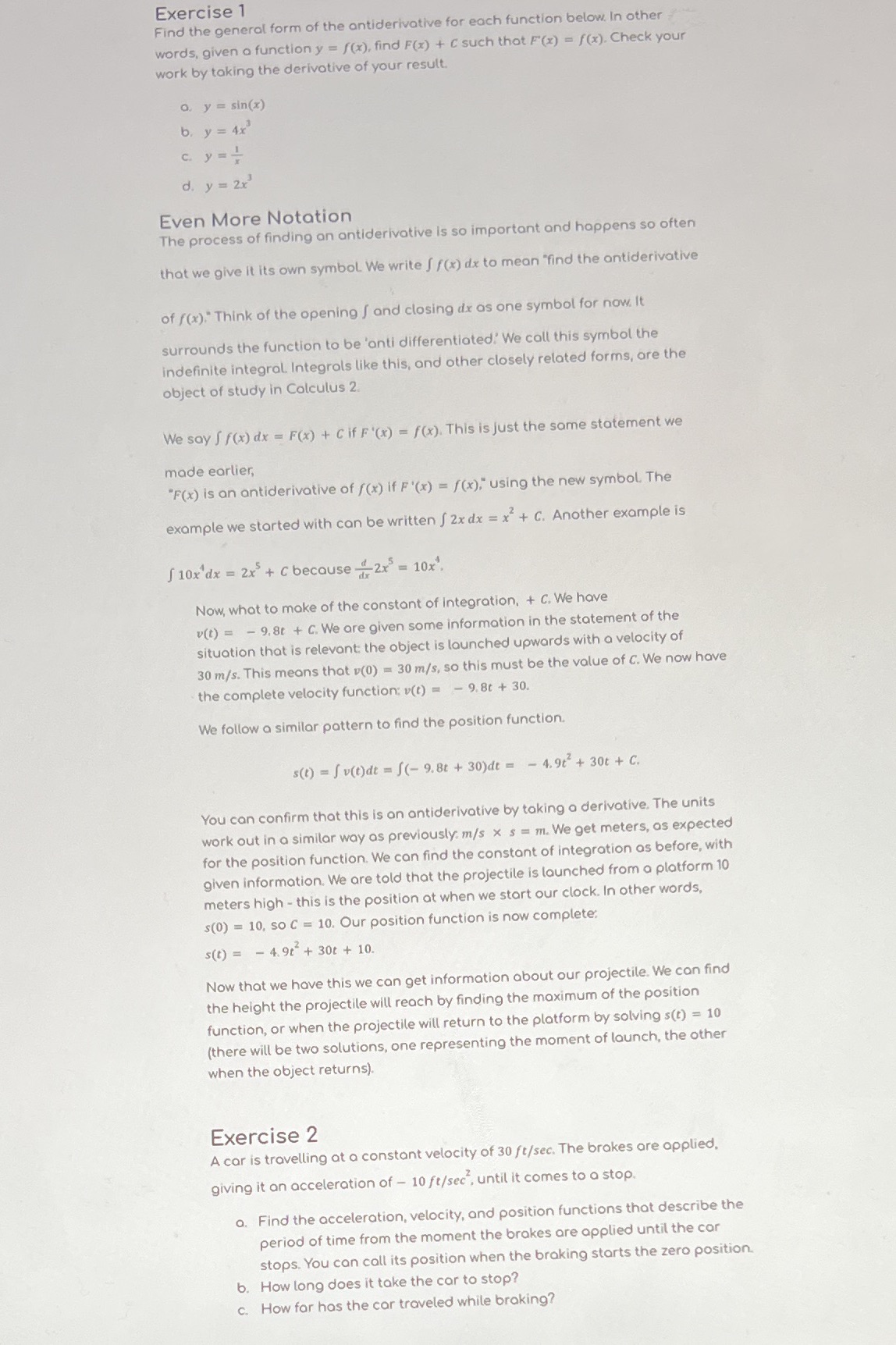
Please help
Exercise 1 Find the general form of the antiderivative for each function below. In other words, given a function y = f(x), find F(x) + C such that F(x) = f(x). Check your work by taking the derivative of your result. o. y = sin(x) b. y = 4x Cy =1 d. y = 2x Even More Notation The process of finding an antiderivative is so important and happens so often that we give it its own symbol We write J f(x) dx to mean "find the antiderivative of f(x)." Think of the opening J and closing dx as one symbol for now. It surrounds the function to be 'onti differentiated!' We call this symbol the indefinite integral Integrols like this, and other closely related forms, are the object of study in Colculus 2. We say S f(x) dx = F(x) + c if F'(x) = f(x). This is just the some statement we made earlier, "F(x) is an antiderivative of f(x) if F'(x) = /(x)," using the new symbol. The example we started with con be written f 2x dx = x + C. Another example is 10x'dx = 2x + C because # 2x = 10x' Now, what to make of the constant of Integration, + C. We have v(t) = - 9.8t + C. We are given some information in the statement of the situation that is relevant the object is launched upwards with a velocity of 30 m/s. This means that v(0) = 30 m/s, so this must be the value of C. We now have the complete velocity function: v(t) = - 9.8t + 30. We follow a similar pattern to find the position function. s(t) = [ v(t)dt = S(- 9.8t + 30)dt = - 4.9t + 30t + C. You can confirm that this is on antiderivative by taking a derivative. The units work out in a similar way as previously. m/s x s = m. We get meters, as expected for the position function. We can find the constant of integration as before, with given information. We are told that the projectile is launched from a platform 10 meters high - this is the position at when we start our clock. In other words, s(0) = 10, so C = 10. Our position function is now complete: s(t) = - 4.9t + 30t + 10. Now that we have this we can get information about our projectile. We can find the height the projectile will reach by finding the maximum of the position function, or when the projectile will return to the platform by solving s(t) = 10 (there will be two solutions, one representing the moment of launch, the other when the object returns). Exercise 2 A car is travelling at a constant velocity of 30 ft/sec. The brakes are applied. giving it an acceleration of - 10 ft/sec , until it comes to a stop. a. Find the acceleration, velocity, and position functions that describe the period of time from the moment the brakes are applied until the cor stops. You can call its position when the braking starts the zero position. b. How long does it take the car to stop? c. How far has the car traveled while broking








